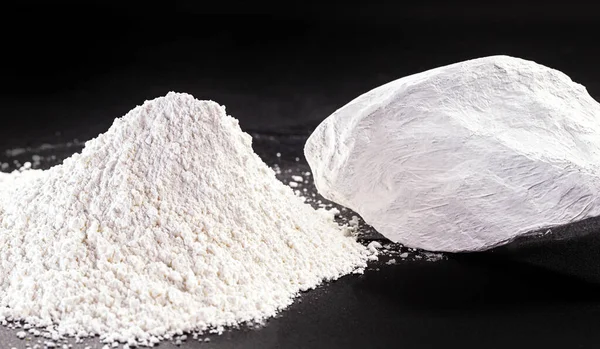Dry fine grinding technology applied in the field of agricultural chemistry

Production Process
The reason why pesticide manufacturers develop specific components and dosage forms is to make the active ingredients effective in reducing the factors that are unfavorable to crop growth (such as pests, weeds or fungi… ). Therefore, plant protection agents can be said to be essentially a mixture of different ingredients. These ingredients can basically be summarized into three categories:
active ingredient in the formulation.
Fillers for diluting active substances, such as clay, talc, kaolin or silica.
Auxiliaries and additives to improve formulation quality (e.g. stabilizers, wetting agents, protective agents, defoamers, etc.)
In the pesticide production process, the first step is feeding and mixing; the second step is grinding. Through different types of grinding equipment as shown below, the mixed material particles are ground and dispersed to the target fineness to meet the application requirements. After grinding, it goes through a sieving process to prevent possible oversized particles. Finally, the additives or fillers that do not need to be ground are added, and the dispersive mixing is carried out again.
Reasons why pesticide particles are required to be ultrafine particles and narrow particle size distribution:
The finer the active ingredient particles, the more potent the action, which means that a smaller amount can be used to achieve the same medicinal effect. Here are the safety, environmental and economical factors:
Reduce toxic effects on persons in the spray area.
Reduce pollution to the environment.
Reduce pesticide production costs and increase profits by reducing the amount of the most costly active ingredient used in the formulation.
Narrow particle size distribution facilitates the simplification of pesticide application steps:
The powder is dispersed in water before application on crops. The finer the particles, the more stable the suspension and no settling occurs during handling.
In the process of pesticide spraying, it effectively reduces the problem of large particles clogging the nozzle of the spraying system.
Mechanical impact mills can be used for fine grinding of soft to medium hard materials. Typical fineness ranges for the median particle size are 20 to 500 μm. The peripheral speed is 25 to 150 m/s. NETZSCH can also provide another model with counter-rotating method and a speed of up to 250 m/s. The air flow depends on the rotor type, thus ensuring temperature-stabilized grinding. The rotor is mounted horizontally and the shaft seal is of the non-contact labyrinth type due to the high shaft speed.
Mechanical mill CSM with grading function
This type of grading mill offers the possibility of simultaneously achieving both grinding and grading functions in one system. CSM classifier is a combination of fine impact classifier and guide wheel classifier. Driven by two independent motors, one for the grinding disc and the other for the classifying wheel, the CSM can precisely adjust the classifying wheel speed to obtain a wide range of final product fineness from d97=9μm to 200μm. By utilizing the geometric shape of the impeller of the classifier and the gap air seal between the classifier wheel and the top cover of the machine, the precise control of the upper limit of the particle size of the grinding material is ensured, thereby achieving fine classification.
The Fluidized bed jet mill is suitable for ultra-fine grinding of materials of various hardness (soft to extremely hard). In the grinding area, the particles are driven by the high-speed airflow to collide and grind each other, without additional grinding parts, and the dynamic classifier controls the maximum particle size. The air velocity at the outlet of the nozzle in the grinding chamber can reach 500 to 600 m/s. Because of the high grinding energy and impact velocity that can be generated in the fluidized bed, it is possible to achieve a D50 fineness of 1 to 5 μm.
Due to this structural feature, the jet mill has a very attractive feature: there is no temperature rise in the grinding chamber during the grinding process. The reason is that the heat generated when the particles collide with each other is offset by the cooling phenomenon of the expanded compressed gas, so that the temperature in the grinding chamber remains constant, and the active substance molecules will not be destroyed.
As a machinery manufacturer, ALPA has been devoting itself to designing grinding equipment and systems, and the machines have many designs that are convenient for customer maintenance. The design of the top cover with the grading wheel assembly can be fully opened, the rotating cavity shape and the properly selected maintenance door make it very easy for users to access the internal components. It is constructed of stainless steel, finely polished, and has a drain valve at the bottom of the grinder so it can be cleaned with water for easy cleaning.
